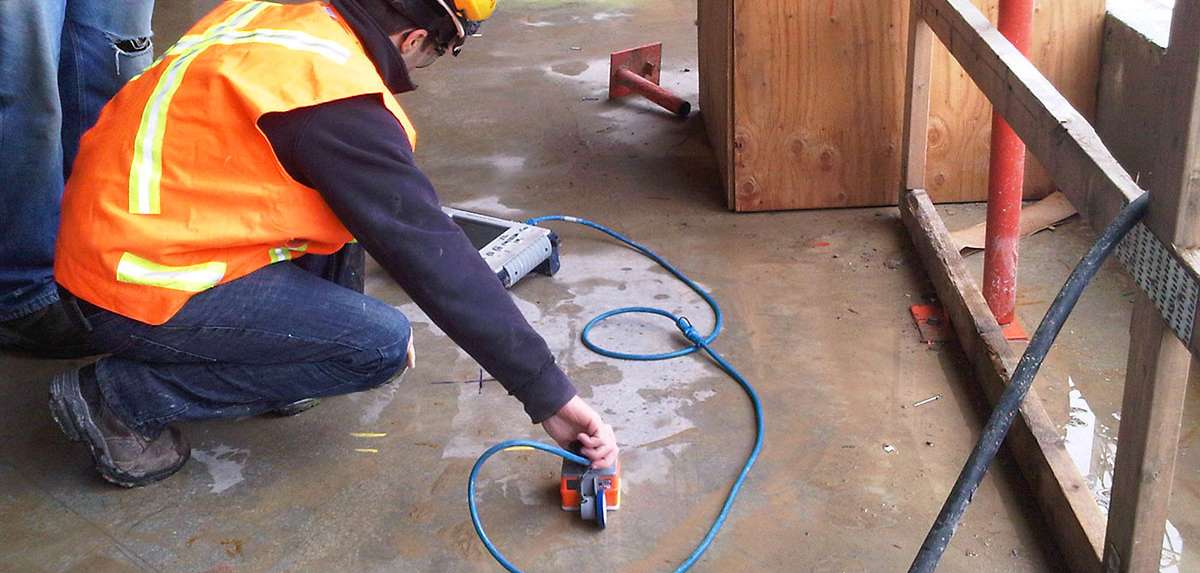Improve Construction Security with Professional Concrete Scanning
Wiki Article
Beyond the Surface Area: Leveraging Advanced Concrete Scanning Techniques for Unmatched Accuracy and Understanding
Advanced concrete scanning strategies have actually emerged as important tools in this quest, supplying a glimpse below the surface area to introduce a world of vital insights. By utilizing sophisticated technologies, experts can discover abnormalities, analyze the condition of concrete structures, and make notified choices that form the course of projects.Value of Advanced Concrete Scanning
The value of utilizing advanced concrete scanning methods hinges on the unrivaled accuracy they offer for finding sub-surface abnormalities and guaranteeing structural stability. By utilizing innovative innovations such as ground-penetrating radar (GPR), electro-magnetic induction, and advanced sonar imaging, building experts can dig underneath the surface area of concrete frameworks with a level of accuracy that far surpasses conventional evaluation techniques. Concrete Scanning. These techniques allow the identification of covert risks like rebar rust, spaces, channels, or post-tension cords that might endanger the security and security of a framework graduallyIn addition, progressed concrete scanning gives very useful insights into the overall problem of a concrete component without the need for invasive steps, lessening the danger of creating damages throughout the evaluation procedure. The capability to identify the precise place and deepness of prospective problems enables targeted repair work and maintenance, ultimately extending the life expectancy of the framework and enhancing its performance. Basically, the significance of advanced concrete scanning can not be overemphasized in the realm of construction and framework upkeep, where precision and reliability are critical.
Kinds Of Cutting-Edge Technologies

Abnormalities and Issue Detection

Along with GPR, concrete scanning strategies like thermography and impact-echo screening are additionally effective in identifying flaws and abnormalities. Thermography utilizes infrared innovation to determine variants in surface temperature, showing potential areas of worry such as delamination or moisture ingress. On the other hand, impact-echo screening entails evaluating acoustic responses to detect spaces, splits, and various other problems within the concrete. By leveraging these sophisticated methods, specialists can proactively address architectural issues, making sure the long life and safety and security of concrete structures. navigate to this site
Assessing Concrete Condition
How can engineers accurately review the condition of concrete frameworks to guarantee their long life and safety and security? Analyzing the concrete problem is a critical facet of maintaining facilities honesty. Numerous sophisticated concrete scanning strategies are employed for this function. Ground-penetrating radar (GPR) is commonly used to analyze the interior structure of concrete, discovering voids, fractures, and other anomalies that might jeopardize its strength. Furthermore, impact-echo testing can offer insights into the density and honesty of concrete components. Ultrasonic pulse rate testing is an additional valuable approach for evaluating concrete high quality by measuring the speed of acoustic waves via the material.Integrating non-destructive screening methods with visual evaluations permits for an extensive assessment of concrete condition, allowing engineers to identify possible concerns early on and carry out timely maintenance or repairs. By leveraging these sophisticated methods, engineers can make sure find the lasting toughness and safety of concrete structures.
Enhancing Decision-Making Procedures
In the realm of facilities management, optimizing decision-making processes is critical for making sure the effective maintenance and long life of concrete frameworks. Enhanced decision-making processes in concrete administration involve utilizing sophisticated scanning strategies to collect detailed data on the condition of frameworks. By leveraging modern technologies such as ground-penetrating radar and 3D imaging, stakeholders can make informed choices pertaining to reinforcement, replacement, or fixing strategies.These advanced scanning strategies offer important understandings into the inner composition of concrete, recognizing possible issues such as spaces, cracks, or their explanation rust that might not be visible on the surface area. This level of thorough information enables aggressive maintenance planning, decreasing the risk of structural failings and increasing the total life expectancy of concrete structures.
Additionally, by incorporating digital paperwork and evaluation devices right into the decision-making procedure, stakeholders can track the development of concrete problems in time, allowing predictive maintenance techniques and enhancing resource allotment. Ultimately, the integration of advanced concrete scanning techniques enhances decision-making procedures by giving unparalleled precision, understanding, and effectiveness in infrastructure management.
Verdict
To conclude, progressed concrete scanning strategies use unrivaled accuracy and understanding in identifying abnormalities, flaws, and examining the problem of concrete structures. By leveraging advanced technologies, decision-making procedures can be improved, resulting in more effective and enlightened remedies for preserving and repairing concrete framework. These methods play an essential role in making certain the security and longevity of concrete frameworks, making them a crucial tool in the area of building and engineering.Additionally, advanced concrete scanning gives vital insights right into the total condition of a concrete component without the requirement for intrusive steps, minimizing the danger of causing damages during the evaluation procedure - Concrete Scanning. One more cutting-edge innovation is 3D X-ray scanning, which provides in-depth pictures of the inner structure of concrete, supplying important details without the need for devastating testing. In Addition, Concrete Cover Meters are utilized to determine the density of concrete cover over reinforcement bars precisely. Boosted decision-making processes in concrete monitoring involve using advanced scanning methods to gather in-depth information on the condition of structures.In final thought, progressed concrete scanning techniques use exceptional precision and insight in detecting anomalies, flaws, and assessing the condition of concrete structures
Report this wiki page